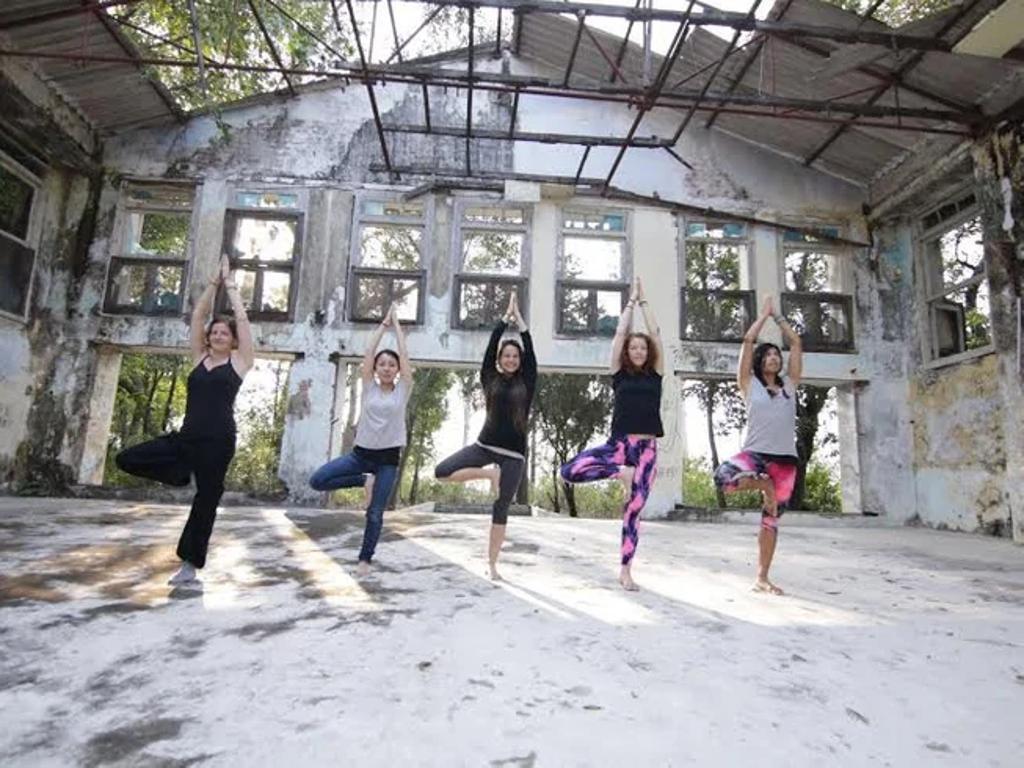A Beginner's Guide to Hatha Yoga: Unveiling the Philosophies, History, and Essence
Understanding the Philosophy, History, and Development of Hatha Yoga:
Hatha Yoga, originating from the Sanskrit words "ha" (sun) and "tha" (moon), symbolizes the union of opposites. The philosophy emphasizes balancing the active and passive aspects of existence, aligning breath with movement to achieve harmony within the body and mind. Originating in ancient India, Hatha Yoga traces its roots back to the 15th-century text, Hatha Yoga Pradipika, authored by yogic sage Swatmarama. This foundational text laid the groundwork for the physical postures (asanas), breathing techniques (pranayama), and purification practices associated with Hatha Yoga.
The Four Major Distinct Elements of Hatha Yoga:
**Asanas (Physical Postures):**
Within the realm of Hatha Yoga, the term "asanas" refers to the various physical postures assumed during practice. This fundamental aspect of Hatha Yoga places a profound emphasis on fostering flexibility, strength, and balance in practitioners. The spectrum of asanas is intricately designed to cater to individuals at various skill levels, incorporating both simplicity and complexity. Through the practice of these postures, individuals can enhance their flexibility, allowing for improved range of motion in joints and muscles. Simultaneously, the engagement of specific muscle groups facilitates the development of strength. Moreover, the deliberate execution of these postures promotes balance, requiring practitioners to align their bodies in a way that enhances overall equilibrium. In essence, asanas in Hatha Yoga serve as physical manifestations of the harmonious integration of flexibility, strength, and balance within the body.
**Pranayama (Breath Control):**
Central to the practice of Hatha Yoga is the discipline of pranayama, denoting breath control. Unlike other yoga styles, Hatha places a distinctive emphasis on the art of regulating one's breath to not only invigorate the body but also to forge a connection with the life force within. In contrast to more dynamic yoga styles, pranayama in Hatha involves deliberate, measured breaths, promoting a heightened awareness of each inhalation and exhalation. Through consistent practice, Hatha Yoga practitioners cultivate a deeper understanding of their breath, facilitating a unique journey towards vitality, calm, and focused mindfulness that sets this style apart in the world of yoga.
**Mudras (Gestures):**
Within the context of Hatha Yoga, mudras refer to intricate hand and finger gestures that play a pivotal role in channelling energy throughout the body. This distinguishing element sets Hatha apart from other yoga styles, as it incorporates symbolic movements believed to influence the body's energy flow. These intentional gestures extend beyond mere physical postures, delving into the realms of energetic balance and spiritual connection. Practitioners engage in mudras as a means to deepen their connection with the inner self, acknowledging the subtle yet profound influence of these symbolic hand movements on their overall well-being. In the tapestry of Hatha Yoga, mudras serve as a unique and spiritually enriching facet that sets it apart in the vast landscape of yogic practices.
**Bandhas (Energy Locks):**
In the practice of Hatha Yoga, the incorporation of bandhas, also known as energy locks, stands as a defining feature. Diverging from other yoga styles, Hatha places significant importance on these intentional energy locks designed to control and direct the flow of prana, the life force. Unlike more fluid approaches, Hatha practitioners engage in specific muscle contractions during both asanas and pranayama to harness and channel energy within the body. This deliberate interplay of physical and energetic elements contributes to the holistic nature of Hatha Yoga, showcasing its distinctive focus on the nuanced management of vital life forces for enhanced well-being.
### The Timeless Appeal of Hatha Yoga:
**Accessible to All:**
One of the remarkable aspects of Hatha Yoga is its general accessibility. It welcomes practitioners of all ages and fitness levels, making it an ideal starting point for beginners seeking a holistic approach to wellness. It continues to be one of the most common entry points of a yogi’s journey into the world of yoga.
**Mind-Body Connection:**
Hatha Yoga's focus on the mind-body connection allows beginner practitioners to start cultivating their self-awareness, promoting their mental clarity, and emotional balance. It provides a safe sanctuary for those seeking both physical and mental well-being and is often a springboard into different Yoga styles further down the track.
**Stress Reduction:**
Hatha Yoga serves as a powerful tool for stress reduction through the intentional fusion of breath and movement. By synchronizing breath with specific postures, practitioners engage in a mindful and rhythmic practice that has been proven to alleviate stress and anxiety. Scientific studies indicate that regular Hatha Yoga practice positively impacts the autonomic nervous system, promoting a relaxation response and reducing stress hormone levels (Kirkwood et al., 2005). This deliberate combination not only enhances mental well-being but also fosters emotional resilience in coping with life's challenges. The practice cultivates a heightened awareness of the present moment, allowing individuals to navigate stressors with a sense of calm and adaptability. As a result, Hatha Yoga stands as a holistic approach to stress reduction, promoting overall well-being and mental fortitude.
### Challenges Faced by Beginners in Hatha Yoga:
**1. Overcoming Physical Limitations:**
Embarking on a Hatha Yoga journey often reveals initial challenges rooted in individual physical limitations, particularly for beginners. However, the beauty of Hatha Yoga lies in its adaptability and encouragement for practitioners to progress at their own pace. Research suggests that yoga interventions, such as Hatha Yoga, can effectively enhance flexibility and muscular strength in individuals with varying physical abilities (Tekur et al., 2012). Gradually building strength and flexibility over time is inherent to the practice, providing a structured approach to mitigate physical constraints.
**2. The Essence of Patience and Consistency:**
Developing a consistent yoga practice is a journey requiring patience, a virtue fundamental to the principles of Hatha Yoga. Studies highlight that regular yoga practice significantly improves overall psychological well-being, emphasizing the importance of patience in achieving long-term benefits (Balasubramaniam et al., 2013). For beginners, establishing a routine may be challenging initially, but the key lies in persistent dedication and a commitment to gradual improvement.
**3. Navigating Proper Alignment:**
For novice practitioners, grasping the nuances of proper alignment in asanas can pose challenges. Understanding the biomechanics of correct postures is crucial for preventing injuries and optimizing therapeutic benefits. Research underscores the importance of alignment in yoga practice, linking it to enhanced stability and reduced injury risk (Kerr et al., 2016). Seeking guidance from experienced instructors or utilizing reputable resources becomes imperative, offering valuable insights into achieving and maintaining the correct alignment throughout various yoga poses.
Conclusion:
Hatha Yoga serves as a great gateway to the vast world of yoga, offering a holistic approach to physical and mental well-being. Like similar yoga styles, Hatha can be viewed as the ideal entry point into a yoga journey, but it is worth understanding that can become very demanding and challenging as your practice evolves. Hatha yoga is the ideal yoga style and philosophy that facilitates a lifelong continuous journey of self-development that ultimately leads to a more balanced and harmonious existence.





